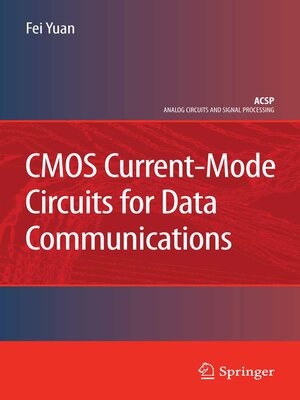CMOS Current-Mode Circuits for Data Communications
ebook ∣ Analog Circuits and Signal Processing
By Fei Yuan

Sign up to save your library
With an OverDrive account, you can save your favorite libraries for at-a-glance information about availability. Find out more about OverDrive accounts.
Find this title in Libby, the library reading app by OverDrive.



Search for a digital library with this title
Title found at these libraries:
| Library Name | Distance |
|---|---|
| Loading... |
Current-mode circuits, where information is represented by the branch currents of the circuits rather than the nodal voltages as of voltage-mode circuits, possess many unique and attractive characteristics over their voltage-mode counterparts including a small nodal time constant, high current swing in the presence of a low supply voltage, reduced distor tion, a low input impedance, a high output impedance, less sensitive to switching noise, and better ESD immunity. CMOS current-mode circuits have found increasing applications in telecommunication sys tems, instrumentation, analog signal processing, multiprocessors, high speed computer interfaces, and the backplane of complex electronic sys tems. This book deals with the analysis and design of continuous-time CMOS current-mode circuits for data communications over wire chan nels. CMOS current-mode sampled-data networks, such as switch- current circuits, and current-mode logic circuits, are excluded. The book is organized as the followings : Chapter 1 examines the distinct characteristics of ideal voltage-mode and current-mode circuits. The topology duaUty of these two classes of circuits is investigated using the concept of inter-reciprocity and adjoint network. A critical comparison of the input and output impedances, bandwidth, slew rate, propagation delay, signal swing, supply voltage sensitivity, and ESD sensitivity of voltage-mode and current-mode cir cuits is provided. Chapter 2 investigates design techniques that improve the perfor mance of low-voltage current-mode circuits including input impedance reduction, output impedance boosting, bandwidth enhancement, mis match compensation, power consumption reduction, and swing improve ment. Chapter 3 investigates the modeling of wire channels.







